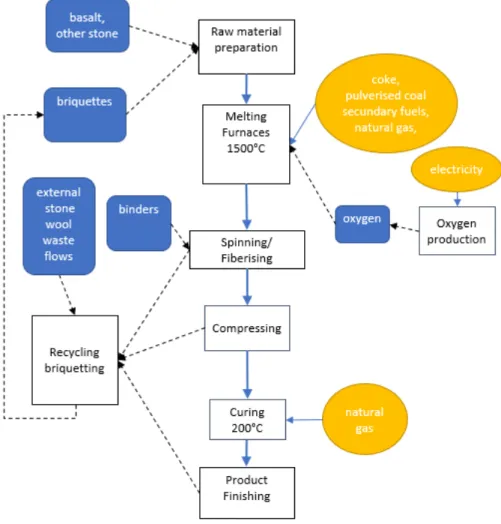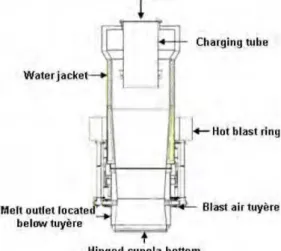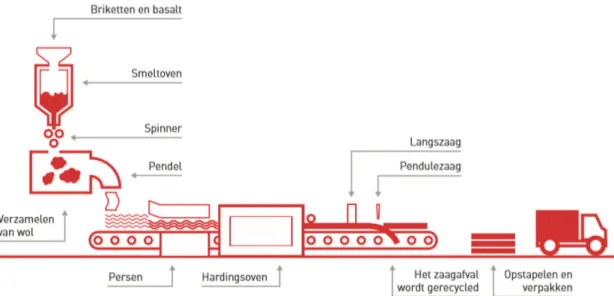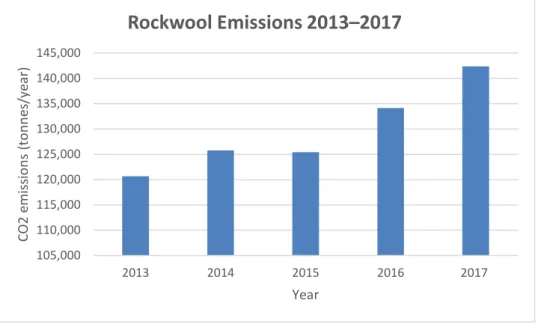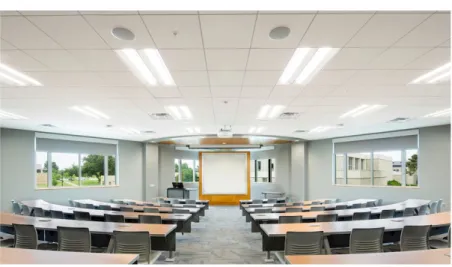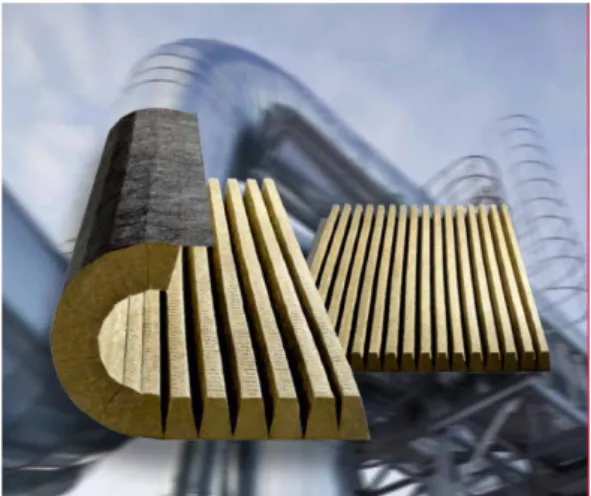DECARBONISATION OPTIONS
FOR THE DUTCH STONE WOOL
INDUSTRY
R. Krijgsman, M. Marsidi
12 December 2019
Decarbonisation options for the stone wool industry
© PBL Netherlands Environmental Assessment Agency; © ECN part of TNO The Hague, 2019
PBL publication number: 3722
TNO project no. 060.33956 / TNO publication number: TNO 2019 P11127
Authors
R. Krijgsman and M. Marsidi
Acknowledgements
We thank Kirstin Goossens (Rockwool B.V.) for her valuable help and comments.
MIDDEN project coordination and responsibility
The MIDDEN project (Manufacturing Industry Decarbonisation Data Exchange Network) was initiated and is also coordinated and funded by PBL and ECN part of TNO. The project aims to support industry, policymakers, analysts, and the energy sector in their common efforts to achieve deep decarbonisation. Correspondence regarding the project may be addressed to: K.M. Schure (PBL), Klara.Schure@pbl.nl, or A.W.N van Dril (TNO), Ton.vanDril@tno.nl.
Production coordination
PBL Publishers
This publication is a joint publication by PBL and ECN part of TNO and can be downloaded from: www.pbl.nl/en. Parts of this publication may be reproduced, providing the source is stated, in the form: R. Krijgsman and M. Marsidi (2019), Decarbonisation options for the Dutch stone wool industry. PBL Netherlands Environmental Assessment Agency and ECN part of TNO, The Hague.
PBL Netherlands Environmental Assessment Agency is the national institute for strategic policy analysis in the fields of the environment, nature and spatial planning. We contribute to improving the quality of political and administrative decision-making by conducting outlook studies, analyses and evaluations in which an integrated approach is considered paramount. Policy relevance is the prime concern in all of our studies. We conduct solicited and
unsolicited research that is both independent and scientifically sound.
ECN part of TNO has a twofold mission: to accelerate the energy transition and to strengthen the competitive position of the Netherlands. ECN part of TNO conducts independent and internationally leading research and we stand for an agenda-setting, initiating and supporting role for government, industry and NGOs.
This report was reviewed by Rockwool NL B.V. PBL and ECN part of TNO remain responsible for the content. The decarbonisation options and parameters are explicitly not verified by the companies.
Contents
Summary 4
INTRODUCTION
5
1
STONE WOOL PRODUCTION IN THE NETHERLANDS
6
1.1 Rockwool’s history 6
2
STONE WOOL PROCESSES
7
2.1 Overview 7
2.2 Raw material preparation and melting 8
2.3 Fiberising 8
2.4 Downstream processes and recycling 9
2.5 Energy and material consumption 10
2.6 CO2 emissions 10
2.7 Other emissions 11
2.8 Investment costs 11
3
STONE WOOL PRODUCTS AND APPLICATION
12
3.1 Stone wool properties and composition 12
3.2 Product Descriptions 12
3.3 Logistics 14
4
OPTIONS FOR DECARBONISATION
15
4.1 Energy efficiency measures 15
4.2 Oxy-fuel cyclone furnace 16
4.3 Full electric furnaces 16
4.4 Bio-based solutions 16
4.5 Hydrogen 17
FINDINGS
Summary
Stone wool production in the Netherlands takes place at Rockwool NL B.V. in Roermond. The company produces 300 kilotonnes (kt) of stone wool products annually, from various
minerals and recycling flows. The related CO2 emissions mainly come from the melting
process and amount to 142 kt per year (2017). A small part of these CO2 emissions are
process emissions from carbon in the raw material. Based on 300 kt production, the amount of fuel used consists of 0.84 PJ coke, 0.48 PJ natural gas and 0.15 PJ residual fuels. Final electricity consumption amounts to 0.33 PJ.
On-site decarbonisation options consist of various energy efficiency measures and alternative fuels like biomass, biogas and hydrogen. Another important option is the electrification of the melting furnaces.
FULL RESULTS
Introduction
This report describes the current situation for stone wool production in the Netherlands and the options and preconditions for its decarbonisation. The study is part of the MIDDEN project (Manufacturing Industry Decarbonisation Data Exchange Network). The MIDDEN project aims to support industry, policymakers, analysts, and the energy sector in their common efforts to achieve deep decarbonisation. The MIDDEN project will update and elaborate further on options in the future, in close collaboration with the industry. The Climate Agreement has ambitions to decrease the total CO2 emissions in The
Netherlands by at least 49% in 2030 compared to 1990 levels (Klimaatakkoord, 2018). This is in line with the goals set by the Paris agreement: a maximum increase in average global temperature of 2°C and preferably 1.5°C. To help accomplish this, the Province of Limburg has set up ‘het Limburgse Energie Akkoord’, which is a collaboration of energy intensive companies that convene regularly in order to exchange knowledge and problems that come with decarbonisation (Provincie Limburg, 2018). Rockwool’s CSR report states that it has ambitions to further reduce its carbon footprint by 10% in 2022 and 20% in 2030 compared to 2015 (Rockwool Benelux Holding, 2015).
Rockwool products help buildings decrease their carbon emissions by, among others, insulating them. This reduces the carbon footprint of buildings. The average savings in emissions that their products provide are generally over 100 times the emissions from their production process (Rockwool Group, 2017). However, the increase in production may eventually lead to higher cost for Rockwool through CO2 emissions costs, due to the ETS
legislation, which requires industrial plants to continuously reduce its emissions.
For an energy intensive company such as Rockwool, decarbonisation is important, as, despite the CO2 reducing effects of its products, the impact of its production process related CO2
emissions on the total Dutch emissions is relevant. To reduce its emissions, insights in the production process and knowledge of potential gains are required.
Scope
In the Netherlands, stone wool producers include: Roermond (Rockwool NL B.V.) Production processes include: Mineral melting, fiberisation, curing and compression.
Products include: Stone wool mats, stone wool substrates, system ceiling panels, stone wool panels and stone wool fibres.
Reading guide
Section 1 introduces the Dutch stone wool industry. Section 2 describes the current situation for stone wool production processes in the Netherlands, and Section 3 describes the relevant products of these processes, while options for decarbonisation are systematically quantified and evaluated in Section 4.
FULL RESULTS
1 Stone wool
production in the
Netherlands
Rockwool is the world’s largest manufacturer of stone wool (Rockwool Benelux Holding, 2015). As part of the Rockwool Group, the plant in Roermond is the largest stone wool plant in the world, capable of producing around 300 kilotonnes per year (Rockwool Benelux Holding, 2015). Its total greenhouse gas emissions were 125 kilotonnes (kt) CO2 in 2015,
134 kt CO2 in 2016 and 142 kt CO2 in 2017 (Nederlandse Emissieautoriteit, 2018). The plant
employs around 1150 staff (Rockwool Benelux Holding, 2015).
For most buildings, especially older ones, insulation is an effective way to reduce energy consumption. Stone wool is an established insulation material. Stone wool has the advantage that it is easy to recycle; up to 100% can be recycled (Rockwool, 2009). Mineral wools are widely used in the Netherlands, as 17.6 million m2 of mineral wool have been used to
insulate buildings and industrial equipment such as pipelines (RVO, 2014). Around 8.8% of all mineral wool is produced in The Netherlands (Rockwool and Saint Gobain Isover
(discussed in a separate report on glass wool; Krijgsman & Marsidi, 2019)) (JRC, 2013). The production of mineral wool, and specifically stone wool, is an energy intensive process.
General information Rockwool
Rockwool NL B.V. Industrieweg 15 6045 JG Roermond Employees: 1150 (2015)
1.1 Rockwool’s history
Rockwool started in Denmark as a gravel mining company. In the 1930’s, its focus started to shift towards stone wool. In the Netherlands, the Rotterdam-based Pelt & Hooykaas N.V. started producing stone wool in the late 1940’s on the same grounds as Hoogovens, using blast furnace slag. The products were branded as Lapinus. A new factory was put into use in Roermond in 1968, using basalt imported from Germany. In 1971 it joined forces with the current biggest producer of stone wool products, Rockwool. The plant has grown steadily over 50 years. In 2012, Rockwool invested in a new melting oven, replacing its cupola furnace.
2 Stone wool
processes
2.1 Overview
The process of stone wool production can be divided into raw material preparation and melting, fiberising, compressing, curing and finishing. An overview of the production process is presented in Figure 1. The process will be further explained in the text below. The steps melting and fiberising determine the quality and composition of the stone wool mats.
2.2 Raw material preparation and melting
Stone wool is produced by melting basalt, briquettes and various minerals (limestone, dolomite) at 1500°C (Rockwool Benelux Holding, 2015). The raw materials are delivered to Rockwool by road or rail and are sourced as closely as possible to the plant in order to minimise emissions and save on transport costs. The raw materials are stored in silos. The ingredients need to be mixed carefully before entering the furnace on conveyor belts. This is done by feeding the materials on conveyor belts in the right quantities simultaneously. These conveyor belts bring the raw material into the melting furnaces by inserting it at the top. The material input takes place in small batches, to allow continuous operation of the melting furnaces. Rockwool has four production lines in place with four melting ovens. Three of these are cupola furnaces and one is an oxy-fuel melter. A consistent, homogenous melt needs to be maintained, this includes temperature and composition. Coke and secondary fuel are added into the furnace, where they are combusted, melting the materials. For the oxy-fuel cyclone oven, pulverised coal is used. A schematic section of a melting cupola furnace is depicted in Figure 2. When a stop occurs, the supply of ingredients is stopped and the furnace is emptied to prevent residues staying behind in the melting oven. The furnaces are only turned off for large maintenance activities or defects, or if the demand is temporarily low.
Figure 2 Schematic representation of a typical cupola furnace (JRC, 2013)
The melt is tapped from the bottom of the furnace onto a spinner. Emissions from the melt include CO2, but also contain dust, chlorides, sulphur dioxide and nitrogen oxides. The
chlorides, sulphur dioxide and nitrogen oxides are a consequence of impurities in the materials. Water is used to cool the furnace to control the temperature (JRC, 2013).
2.3 Fiberising
Fibres are the result of a molten mixture of minerals being exposed to high speeds, causing the melt to divide into fibres. The melt falls onto the rapidly-rotating discs of the spinning machine, and is thrown off in a fine spray, forming fibres. Air is blown from behind the rotating discs to cool the fibresand to direct them onto a collection belt to form a mat (JRC, 2013). The spinner turns the melt into single strands with a diameter of micrometers. Before the fibres exit the spinner, a chemical binder is sprayed onto them to give them properties like water repellence and make them group together into a mat. It also prevents breakage in the individual fibres. The binder is a resin based on predominantly phenol formaldehyde (Rockwool Benelux Holding, 2015). After spinning, part of the short fibres remain in the
machine instead of being led to the next step on conveyor belts. This is the biggest source of material losses throughout the process. Figure 3 represents the stone wool production process
Figure 3 The production process, including spinners (Rockwool Benelux Holding, 2015)
2.4 Downstream processes and recycling
To make the fibre material group together more, a machine compresses the mats further. To harden, the mat enters a curing oven running on natural gas at 200–250°C (JRC, 2013; EURIMA, 2019). The curing oven is the second largest source of emissions, after the emissions from coke combustion in the furnace. The insulation mats are cut, rolled up and packaged for transport to the customers. The various panels and other rigid products are lined, cut, finished, packed and transported.
Because the process also generates waste, a recycling facility is used to handle internal and external waste efficiently. In the facility, the waste is sorted and prepared for briquetting. The waste is agglomerated in briquettes using cement. These blocks contain a mixture of materials, mainly recycled. When fed again into the furnace, the shape allows air to pass through that part of the melt before it becomes liquid. An additional advantage to briquetting is that the briquettes already have the right composition, except for the binder that has to be removed. Material losses originate from flue gases, cutting and fiberising (Rockwool Benelux Holding, 2015). Assumed is that all waste is converted into briquettes in the recycling facility recycled1. This recycling of internal waste amounts to about 60 kt per year. The remainder of
recycled inputs is assumed to come from external sources, such as stone wool from construction sites and horticulture but also other secondary materials from other sources (Rockwool Benelux Holding, 2015).
The stone wool production uses briquettes as its main source of materials, as 0.5 tonnes of briquette per tonne of Rockwool mat are inserted. The majority of the composition of briquettes are from recycled components, but the consistency of these briquettes can vary. Basalt remains the main ingredient.
2.5 Energy and material consumption
Table 1 depicts the energy and material inputs required for the production of stone wool. Per tonne of product, about 20% waste is produced, which is recycled internally (Rockwool Benelux Holding, 2015).
Table 1 Material and energy inputs per tonne product
Input Unit per kt
stone wool Value Source
Briquettes kt 0.50 (Rockwool Benelux Holding, 2015)
Basalt kt 0.39 (Rockwool Benelux Holding, 2015)
Other stone kt 0.27 (Rockwool Benelux Holding, 2015)
Binders kt 0.04 (Rockwool Benelux Holding, 2015)
Energy
Coke and pulverised
coal TJ 2.8 (Rockwool Benelux Holding, 2015)
Electricity TJ 1.1 (Rockwool Benelux Holding, 2015)
Natural gas TJ 1.6 (Rockwool Benelux Holding, 2015)
Secondary fuel TJ 0.5 (Rockwool Benelux Holding, 2015)
Total TJ 5.98 (Rockwool Benelux Holding, 2015)
Output
Rockwool mat kt 1 Base
Waste kt 0.2 (Rockwool Benelux Holding, 2015)
Waste heat TJ 1.6 Assumption
CO2 emissions kt 0.43 (Rockwool Benelux Holding, 2015),
calculation
Total energy inputs are around 6 GJ/tonne product. Waste heat amounts to nearly 50% of energy inputs of the cupola (Leth-Miller & Jørgensen, 2002). Not all of this is usable, because water is used to cool the oven, to prevent the temperature in the melt from getting to the point where it damages the quality of the melt (JRC, 2013).
Table 2 represents equipment capacities. The highest reported annual production was near 298 kt. Including the material losses (72.5 kt), the melting ovens have a combined melting capacity of at least 370 kt per year, or 1000 tonnes per day.
Table 2 Estimated production capacities of all four production lines combined
Unit Melting rate in 2015
[kt/yr]
Melting oven 362.5
Spinner 353.8
Pressing machine 304.5
Curing oven 304.5
Packaging machinery (cutter) 304.5
Production total 290
2.6 CO
2emissions
The specific direct emissions per kt of product are 0.43 kt CO2. Indirect emissions come from
electric power generation and are not accounted to Rockwool in the ETS. Almost all of the emissions are combustion related CO2. However, a small part originates from chemical
reactions in the furnace (Rijksoverheid, 2018). These process emissions are estimated to be around 0.13–0.15% of the total emissions.
The average specific CO2 emission for mineral wool is 0.465 kt CO2 per kt product (Ecofys,
Fraunhofer, Öko-Institut, 2009). This means that nowadays, Rockwool is about 12% better than the average. Figure 4 represents Rockwool’s emissions over the recent years
(Nederlandse Emissieautoriteit, 2018). As the figure depicts, Rockwool’s emissions have increased over the years. This is mainly due to increased demand for insulation materials, which leads to increased production, e.g. from 281 kt in 2013 to 290 in 2015 (Rockwool Benelux Holding, 2015). This underlines the tension between producing more insulation material to make buildings sustainable and facing consequences for emitting more CO2.
Figure 4 Rockwool's emissions over the years 2013–2017
Process emissions mainly come from the used carbonates. The largest part of emissions come from coke and secondary fuel2 in the melting oven (0.31 kt CO2 per kt product). Natural gas
accounts for 0.09 kt CO2 per kt product and is used in the curing oven and for waste gas
incineration. This means the biggest potential for decarbonisation is in the melting process, followed by the curing process. Reported indirect emissions come from electricity use and from business travel, commuting and outsourced transport. These are around 44 and 19 kt, respectively (Rockwool Benelux Holding, 2015).
2.7 Other emissions
Dust emissions, NOx emissions and particulate emissions are not considered as GHG. They are
still unwanted emissions and should be handled with the utmost care. These emissions are part of the flue gases escaping from the melting ovens. Rockwool uses various types of filters and waste gas incineration in order to reduce the emissions of pollutants. The waste gas is incinerated using natural gas (JRC, 2013).
2.8 Investment costs
A stone wool plant producing 120 kt per year will cost around EUR 100 million (JRC, 2013). Operation and maintenance are assumed to be 5% of the total investments per year.
2 Calcinated petroleum coke (Rockwool Benelux Holding, 2015)
105,000 110,000 115,000 120,000 125,000 130,000 135,000 140,000 145,000 2013 2014 2015 2016 2017 CO 2 e m issi on s ( to nn es/ ye ar ) Year
Rockwool Emissions 2013–2017
3 Stone wool products
and application
3.1 Stone wool properties and composition
Mineral wools are used for insulation, mainly for their high thermal resistance, preventing heat from escaping or entering, retaining a constant temperature in a given space. Other advantages of mineral wools are their incombustibility and acoustic properties, these characteristics are typical for stone. Mineral wools consist of compressed fibres that contain air pockets. The air makes the mineral wool have a high thermal resistance, as well as reducing its density. The goal for the production is to have a thermal resistance that is as high as possible. To do this, fibre diameter is an important parameter that needs to be maintained, as this determines the amount and placement of air pockets (Denmark Patentnr. WO92/12941, 1992). Mineral wools can be divided in glass wool, stone wool and high
temperature mineral wool. Rockwool produces stone wool. When rocks are melted, they turn into lava, a highly viscous liquid. In Table 3, the composition of stone wool is depicted. Table 3 Stone wool composition (JRC, 2013)
Material 𝐒𝐒𝐒𝐒𝐎𝐎𝟐𝟐 𝐀𝐀𝐀𝐀𝐀𝐀𝐀𝐀𝐀𝐀𝐒𝐒𝐀𝐀𝐀𝐀 𝐨𝐨𝐨𝐨𝐒𝐒𝐨𝐨𝐀𝐀𝐨𝐨 𝐄𝐄𝐀𝐀𝐄𝐄𝐄𝐄𝐄𝐄 𝐀𝐀𝐀𝐀𝐀𝐀𝐀𝐀𝐀𝐀𝐒𝐒𝐀𝐀𝐀𝐀 𝐨𝐨𝐨𝐨𝐒𝐒𝐨𝐨𝐀𝐀𝐨𝐨 𝐁𝐁𝟐𝟐𝐎𝐎𝟑𝟑 𝐈𝐈𝐄𝐄𝐨𝐨𝐀𝐀 𝐨𝐨𝐨𝐨𝐒𝐒𝐨𝐨𝐀𝐀𝐨𝐨 𝐀𝐀𝐀𝐀𝟐𝟐𝐎𝐎𝟑𝟑 𝐓𝐓𝐒𝐒𝐎𝐎𝟐𝟐 𝐏𝐏𝟐𝟐𝐎𝐎𝟓𝟓
Composition fraction (%)
38–57 0.5–5 18–40 <0.5 0.5–12 0–23 0.5–4 0–1.5
3.2 Product Descriptions
The Rockwool Group produces stone wool mats for insulation in several applications, such as buildings and furnaces. Each application requires slightly different characteristics. The stone wool mats are tailored to meet these requirements. The mats are used for insulation from low to medium-high temperatures (up to 700oC). Energy savings vs. energy consumed in the
manufacturing process can be up to 100 times. The Rockwool Group consists of several brands. The brands on the Benelux market are produced in the plant in Roermond. Products include rockwool mats (Figure 5), more rigid rockwool panels, substrates for the greenhouse industry (Figure 6) and system ceilings (Figure 7), as well as industrial insulation (Figure 8) and stone wool fibres for brakes and gaskets.
Rockwool’s production at full capacity is around 300 kilotons per year. The company claims the stone wool mats are 100% recyclable. Currently, around half of the material inputs are briquettes from recycled materials.
Figure 5 Stone wool mat (Termo Izolacja, 2019)
Figure 6 Grodan stone wool substrates (Hydrohobby, 2019)
Figure 8 Rockwool insulation for industrial applications (General Insulation, 2019)
3.3 Logistics
Resources are gathered as closely as possible to the production facility. For example, basalt is sourced around 150 km from the plant in Roermond. The product output is mainly transported to the Benelux. Transportation is done as much as possible by efficient and sustainable means.
4 Options for
decarbonisation
4.1 Energy efficiency measures
Examples of energy efficiency measures are waste minimisation, insulation of the furnaces, regular machinery maintenance and waste recycling. Waste recycling and injection in the furnace lowers the specific material and energy consumption.
Rockwool B.V. is ISO14001 certified and is registered in EMAS (Eco-Management and Audit Scheme), meaning that it has a system in place that monitors and controls environmental management (JRC, 2013). In their 2017 sustainability report, Rockwool mentions they have lowered their CO2 emissions by 3.8% compared to 2015 levels (Rockwool Group, 2017).
Rockwool Roermond is about as efficient as the best plant was in 2008 and below the benchmark set at 0.664 tonne CO2eq/tonne product. (Ecofys, Fraunhofer, Öko-Institut,
2009). Ongoing incremental energy efficiency improvements are nevertheless continued. Heat losses pose considerable challenges for energy efficiency in an energy intensive industry with high temperature processes, such as stone wool. Rockwool uses its own product to insulate the furnaces. Heat exchangers, steam boilers and heat storage batteries can be options to re-use heat. The most efficient heat recovery method is direct recovery through a heat exchanger. Waste heat recovery can apply to both the melting furnaces and the curing ovens (U.S. Department of Energy, 2004).
Part of the remaining low temperature heat is used for climate control in the buildings. The amount of waste heat is not reported. The municipality of Roermond has considered the use of waste heat for district heating. This is not perceived as a good opportunity by Rockwool, as the investment risks are high and it will not help Rockwool decarbonise. It may even discourage energy efficiency in the process, as the municipality would become dependent on Rockwool’s heat losses.
A trending topic in the sustainability debate is circularity. This theme stands on three pillars: Reduce, Re-use and Recycle (Circle Economy, 2019). Reduce stands for the elimination of waste in the process. Material process waste minimisation is one of the ways to achieve energy efficiency as it increases product output per unit of energy. Re-use represents repairs, refurbishments and general re-use of equipment and products. Efforts to re-use Rockwool products would have to involve clients and are not specifically reported. Recycle includes upcycling, downcycling and recycling. This implies remelting with similar emissions as melting virgin input material. Waste stone wool products are currently recycled at Rockwool providing 42% of the inputs. Also waste rocks from other industries are inputs for the stone wool production process, an example of upcycling. The 3 R’s lead to emission reductions, decreased resource extraction and a decrease in landfills. Rockwool has made considerable efforts in increasing circularity, with around 50% of their material composition being recycled content (Rockwool Benelux Holding, 2015).
4.2 Oxy-fuel cyclone furnace
Furnaces are the most energy intensive components of stone wool manufacturing. Once the lifetime of a furnace is over and no refurbishment is economically feasible anymore, a new furnace must be built. This presents an opportunity to invest in more sustainable melting technologies.
In the oxy-fuel cyclone furnace for stone wool production, pulverised coal is fired instead of coke, and combustion air is enriched with oxygen. Rockwool has replaced one of its cupolas for an oxy-fuel furnace (Provincie Limburg, 2017). The installation uses preheated cyclones. The raw materials are pre-heated in two stages in the cyclones, using the hot flue gases from the furnace. The furnace itself contains four burners (Provincie Limburg, 2012). Replacing all furnaces could save energy and be a step forward in decarbonisation. The fuel costs associated with oxy-fuel combustion increase slightly, as pure oxygen must be either produced on-site or bought from another company. How much oxygen an oxy-fuel furnace requires is unknown. The potential for CO2 emission reduction of the total CO2 emissions,
including process emissions, compared to production using cupola furnaces is estimated to be 7–14%.
4.3 Full electric furnaces
A common decarbonisation option considered across the industry is electrification. This does not eliminate indirect emissions, since the electricity currently is still mainly produced from fossil fuels. It does, however, redirect emissions to the electricity producing companies. If electricity is produced using renewables, the process becomes more sustainable.
For stone wool production, electrification of the melting process can be done using immersed electric arc furnaces, applying resistive heating. Resistive heating makes use of electrodes that are inserted in the melt. Because of the high electric resistance of the materials, the electricity produces heat, which is used to melt the materials. The electrodes typically consist of graphite. The cylindrical steel refractory lined furnace can be ‘hot top’ or ‘cold top’. With cold top, the materials are inserted from the top, providing a material ‘blanket’ on top of the melt. With a hot top, only part of the melt surface is covered. (JRC, 2013). The calculated potential for CO2 emission reduction of the total CO2 emissions, including process emissions,
is 72%. Emissions from natural gas combustion and process emissions are not mitigated. Electrification has the largest CO2 emission reduction potential for decarbonisation of
Rockwool. At the time of writing (2019), no full electric furnaces were found to be implemented for the capacity that Rockwool needs, although smaller scale furnaces are commercially available (JRC, 2013). The implementation of immersed electric arc furnaces may also lead to a decrease in energy consumption, but this is not certain.
4.4 Bio-based solutions
Biochar (charcoal) can partially replace coke or pulverised coal use. The biomass is preferably harvested from local forests to prevent emissions and costs of large-distance transportation. A substitution of 40% leads to a potential reduction of the total CO2
emissions, including process emissions, of 20%. Sustainable forestry practices have to be applied for the biomass supply.
CO2 reduction can also be achieved by using green gas instead of natural gas to fire the
curing oven. This can be done with minor technical adjustments as green gas has a similar composition as natural gas. Green gas is produced from biogas by removing unwanted elements like tar, sulphur and CO2 (ECN, 2014). The biogas can be produced using various
routes such as digestion or gasification and from a variety of biomass sources, both wet and dry. The availability of affordable green gas is currently a limiting factor. This may change as the potential energy content for biogas is estimated at 25 PJ in 2020 and 75 PJ in 2030, according to the green gas roadmap (Green gas forum, 2014). The external effects, such as indirect land use change and changes in the soil, need to be investigated, as well as the potential supply that could be delivered to Rockwool.
4.5 Hydrogen
During the past two years, hydrogen has gained more attention in the mineral wool and glass industry (Verheijen, 2019). The option that is considered is hydrogen combustion instead of natural gas. To be considered a renewable option, the hydrogen has to be produced from electrolysis using renewable electricity (green hydrogen) or from natural gas in combination with CCS to mitigate CO2 emissions (blue hydrogen). It can have the
advantage of cleaner combustion and no CO2 emissions. Questions that still need to be
answered are how equipment design needs to be altered, especially when looking at the burners, and how the different characteristics of H2 will affect the process and efficiency.
The availability of affordable hydrogen produced from renewable electricity (green hydrogen) or hydrogen produced from natural gas in combination with CCS (blue hydrogen), is
currently also a limiting factor. No literature could be found on the use of hydrogen for combustion in ovens.
References
Circle Economy. (2019, January 22). Circularity gap Report 2019. The Platform for Accelerating the Circular Economy (PACE). Retrieved from Circularity Gap: https://www.circularity-gap.world/
ECN. (n.d.). Green gas explained.
Ecofys, Fraunhofer Institute for Systems and Innovation Research, Öko-Institut. (2009, November). Methodology for the free allocation of emission allowances in the EU ETS post 2012: Sector report for the mineral wool industry.
EURIMA. (2019, 02 23). Production Process. Retrieved from Eurima:
https://www.eurima.org/about-mineral-wool/production-process.html
General Insulation. (2019, March 13). Rockwool (Roxul) ProRox SL 400 Series Fabricated
Industrial Solutions. Retrieved from General Insulation:
https://www.generalinsulation.com/products/insulation-products/insulation- types/mineral-wool-insulation/mineral-wool-pipe-insulation/rockwool-prorox-sl-400-series-fabricated-industrial-solutions/
Gigler, J., & Weeda, M. (2018). Routekaart Waterstof TKI Nieuw Gas . Green gas forum. (2014). Green gas roadmap.
Grove-Rasmussen, S., & Elmekilde Hansen, L. (1992). Denmark Patent No. WO92/12941. Hydrohobby. (2019, March 13). 7.5cm Grodan Rockwool Blocks. Retrieved from Hydrohobby:
https://www.hydrohobby.co.uk/7-5cm-grodan-rockwool-blocks.html
JRC. (2013). Best Available Techniques (BAT) Reference Document for the Manufacture of
Glass, Industrial Emissions Directive 2010/75/EU (Integrated Pollution Prevention and Control). Luxembourg: European Union.
Leth-Miller, R., & Jørgensen, S. B. (2002). A Mathematical Model for a Mineral Melting Cupola
Furnace. Technical University of Denmark.
Nederlandse Emissieautoriteit. (2018, May 2). Emissiecijfers industrie 2013-2017. Retrieved from Nederlandse Emissieautoriteit:
https://www.emissieautoriteit.nl/onderwerpen/rapportages-en-cijfers-ets/documenten/publicatie/2018/04/03/emissiecijfers-industrie-2013-2017 Provincie Limburg. (2012). Omgevingsvergunning vervangen koepeloven door smeltoven. Provincie Limburg. (2017, June 12). Omgevingsvergunning: Wijzing pijpschalenhal.
Roermond.
Rijksoverheid. (2018). Bedrijfsrapport. Retrieved from Emissieregistratie: www.emissieregistratie.nl/erpubliek/erpub/facility.aspx
Rockfon. (2019, March 13). Document Library. Retrieved from Rockfon:
https://www.rockfon.com/resources/document-library/?selectedCat=articles Rockwool Benelux Holding. (2015). MVO-verslag.
Rockwool Group. (2017). Building Tomorrow Today: Sustainability Report 2017. Termo Izolacja. (2019, March 13). Rockwool - mata Prorox WM 960 (Wired Mat 105).
Retrieved from Termo Izolacja: https://e-termoizolacje.pl/rockwool-mata-prorox-wm-960-wired-mat-105-pl-23069-en.html
U.S. Department of Energy. (2004). Waste Heat Reduction and Recovery for Improving
Furnace Efficiency, Productivity and Emissions Performance. Washington D.C.
Verheijen, O. (2019, January 30). Interview with Celsian. (R. Krijgsman, & M. Marsidi, Interviewers)
